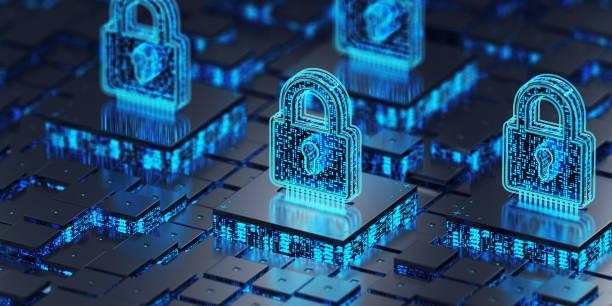
In a period marked by unparalleled technological progress, safeguarding confidential data has never been more crucial. As our dependence on digital interaction and information interchange grows, so does the requirement for solid measures in cybersecurity.
Public Key Infrastructure (PKI) is a pivotal point in digital security, providing an advanced framework for safe communication, encoding, and identity control. Thorough PKI instruction has become essential for individuals and entities aiming to maneuver the complex field of cybersecurity proficiently.
This piece explores the seven vital concepts addressed in extensive PKI training, shedding light on why these components are essential for modern cybersecurity practitioners.
The Pervasiveness of Public Key Infrastructure
PKI is everywhere in our everyday digital engagements, frequently operating in the background to safeguard our conversations and dealings. From web banking to protected email communication, PKI has a vital function in coding information, validating users, and ensuring the honesty of transferred data.
Nevertheless, unlocking the complete capability of PKI demands a subtle grasp of its fundamental ideas and workings – wisdom that thorough PKI Training seeks to convey.

Concepts in PKI Training
Understanding the Basics of Public Key Infrastructure
In the center of PKI lies the graceful and potent idea of uneven cryptography. Full PKI training starts with a complete examination of this fundamental principle, clarifying the workings of the critical public that construct the foundation of protected communication.
Attendees delve into the complexities of coding and decoding procedures. They deeply comprehend how uneven cryptography prevents listening and meddling, ensuring the secrecy and wholeness of electronic data.
-
The Importance of Key Pair Generation
A crucial aspect of PKI education includes grasping the subtleties of producing key pairs. Individuals discover how to create resilient and protected key pairs, vital for protecting electronic communication. The creation procedure involves the utilization of arbitrary number generators and the extent of cryptographic keys. It is thoroughly addressed to guarantee that experts can establish sturdy coding systems.
Digital Certificates and Certificate Authorities
A crucial facet of PKI involves employing electronic certificates as credentials to authenticate the identities of individuals engaged in web interactions. Thorough PKI coaching explores the complexities of electronic certificates and the function of Certificate Authorities (CAs) in their release and administration.
-
Types of Digital Certificates
Attendees acquire the skill to distinguish between diverse kinds of electronic certificates, each fulfilling a particular role. SSL/TLS certificates, for example, assure secure web interaction, whereas code-signing certificates are crucial for confirming software integrity. Via practical exercises and real-life situations, PKI education guarantees that experts are skilled at choosing and executing the appropriate kind of electronic certificate for various situations.
Key Management and Lifecycle
Efficient essential control is crucial for sustaining a protected PKI structure. PKI education provides experts with the information and abilities to handle cryptographic keys during their lifespan. Attendees grasp the complexities of securely dispersing cryptographic keys to authorized entities.
This requires comprehension of protocols and techniques for key interchange that hinder interception and unauthorized entry. The significance of secure key dispersal cannot be exaggerated, as it establishes the basis for creating private and unalterable communication channels.

Certificate Revocation Lists (CRLs) and Online Certificate Status Protocol (OCSP)
PKI education expands into the domain of certificate annulment mechanisms to tackle the changing character of security risks. Certificate Revocation Lists (CRLs) and the Online Certificate Status Protocol (OCSP) act as tools for communicating the present status of digital certificates. They assist in the swift recognition and alleviation of compromised or unauthorized certificates.
-
Online Certificate Status Protocol (OCSP)
Complete PKI education incorporates a comprehensive examination of OCSP, a live protocol for verifying the annulment status of digital certificates. Experts discover how to apply and merge OCSP into PKI frameworks. This guarantees that the cancellation status of certificates is swiftly and precisely confirmed, reducing the timeframe of vulnerability linked with compromised credentials.
Public and Private Key Infrastructure Integration
PKI doesn’t function independently but must smoothly blend with broader IT infrastructures. Thorough PKI education addresses the difficulties and contemplations of merging PKI with alternative security systems. These include firewalls, intrusion detection systems, and identity management resolutions.
-
The Role of PKI in Identity Management
PKI instruction emphasizes the essential function of PKI in managing identities, highlighting how electronic certificates can be utilized to verify and grant permission to users. Understanding how PKI merges with identity and access management systems enhances the capacity of cybersecurity experts. It helps create and sustain secure user verification procedures.

Regulatory Compliance and Legal Considerations
In the maze of cybersecurity, sticking to regulatory structures is non-negotiable. PKI education surpasses the technical elements, delving into the lawful and regulatory terrain concerning digital signatures, encoding, and data safeguarding.
-
The Impact of Regulatory Compliance on PKI
Experts are led through the maze of regulatory necessities, guaranteeing that PKI executions align with lawful benchmarks. Whether GDPR, HIPAA, or other industry-specific rules, PKI training prepares cybersecurity professionals to navigate the intricate landscape of adherence, lessening legal dangers and obligations.
Advanced PKI Concepts: Elliptic Curve Cryptography and Quantum-Safe Cryptography
As technology progresses, so do the hurdles confronted by traditional encoding systems. PKI education surpasses the basics to address sophisticated encoding methods, readying cybersecurity experts to adjust to the developing threat scenery.
- Embracing Elliptic Curve Cryptography (ECC)
Attendees explore the realm of Elliptic Curve Cryptography, a more effective and safeguarded substitute for traditional public-key cryptographic systems. PKI education examines the benefits of ECC regarding velocity and key magnitude. It furnishes professionals with the information required to integrate this sophisticated cryptographic method into PKI structures.

Bottom Line
Thorough PKI education is a keystone in the structure of contemporary cybersecurity. The seven crucial concepts covered range from mastering the fundamentals of asymmetric cryptography to navigating the complexities of adherence and adopting advanced cryptographic methods. They establish a sturdy base for securing digital communication and data exchange.
Organizations are actively enhancing their defenses against a dynamic range of cyber threats. Investing in comprehensive PKI instruction is necessary and a strategic imperative in the ongoing battle for digital security.
